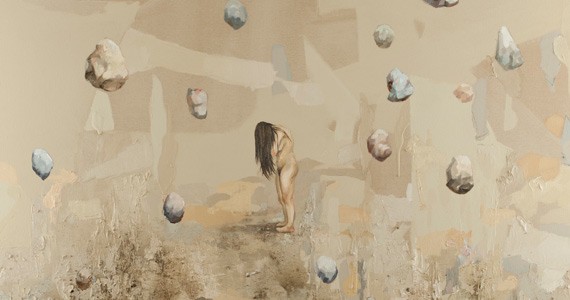In 2010, 24-year old NSCAD graduate Hangama Amiri returned to her hometown of Kabul, Afghanistan after 17 years. She spent time with local women, listened to their stories and took these conversations back to Canada. Amiri put these women and their stories to canvas in a project called The Wind-Up Dolls of Kabul—a project that has garnered her international attention.
Two of her paintings from The Wind-Up Dolls series were selected for a show in London, England last month, The Passion for Freedom Festival. In fact, she got a reply from the curators of the exhibition within 24 hours of sending in her application.
Amiri wasn't planning to do a project about women when she returned to Afghanistan. But when she went into the streets of Kabul she started seeing the same women every day and ended up spending time with them. She says the experience opened up a new direction in her art: "That was very challenging for me as an artist—who I am as a woman and what I am doing here—because we shared the language and the culture. There was still a connection for me with these women."
As a woman living in Canada, the Afghan women she talked to were just as interested in her. "It's very interesting because when I went there and met these individuals," she says, "they asked me more questions than I asked them. They were really interested in how much freedom I have [with] education, going outside, those sorts of things.
"They were very glad that I was bringing their voices into an international context. As an artist, that's what I'm doing—I'm bringing their voices and their portraits into an international context to have an impact," says Amiri. "It's like bringing awareness."
Some women in Afghanistan don't have access to education and the female literacy rate hovers around 12 percent. "The best option for women is equality and promotion of human rights," says Amiri. "It can be done from support from the community."
After taking part in the Passion for Freedom Festival, Amiri met co-exhibitor Ferri Farahmandi, an Iranian woman who has received attention for her sculptures of women bound from head to toe in gauze.
"The things I learned from a couple of Iranian artists who deal with the same subject as my paintings—because they are also [portraying] inner voices of women—were really interesting for me," she says. "These problems are not only happening in Afghanistan but also in Iran and Saudi Arabia."
In November, Amiri moved into a one-year NSCAD artist residency in Lunenburg—another opportunity she applied for on a whim. "I just took a chance and applied. We had an interview, a kind of competition and, well, my presentation was really good and they accepted me for a one-year program."
Now Amiri is working on a multimedia project called The Male Gaze, based on a trip she took to Kabul this summer. On her wall are a series of painted eight by 10 canvases, each portraying a part of a woman's figure.
During her visit to Kabul she went back out into the streets, this time with a video camera. She pointed the lens to the street and captured the gazes Afghan men gave her as they walked by. She plans to project the video over the paintings hanging on her wall. It's a departure from her regular medium of paint, but not by much. "I'm very stuck with my traditional painting," says Amiri
Currently Amiri is gearing up for more shows in Nova Scotia as well as one in New York. Amiri knows her career has taken off since graduating NSCAD and also acknowledges that her story isn't typical of visual arts graduates, but she insists that her experience does not exist in a bubble.
"You have to work hard every day," Amiri says. "By challenging yourself and promoting yourself to get your voice out there."













